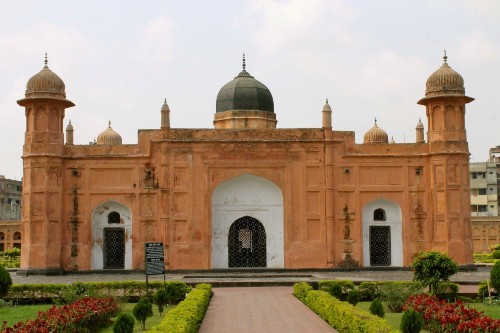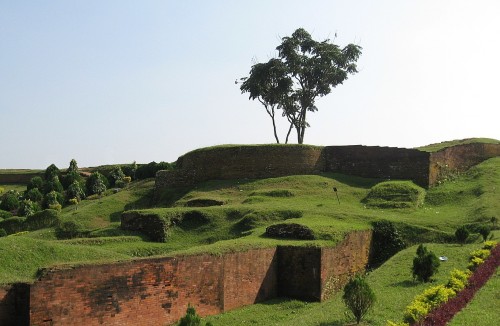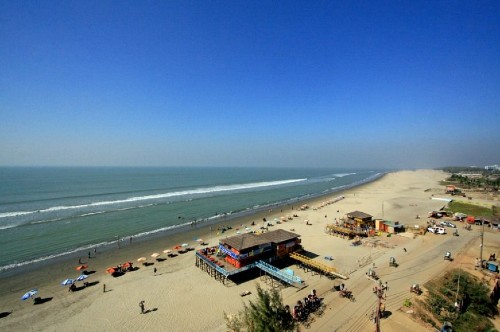외국인 유학생 홈 타운 투어: 방글라데시 보구라

It has been said in Islam that people should acquire knowledge from the rocking cradle to the grave. To acquire knowledge, people do not need to rely on only textbooks, but they can also acquire knowledge by traveling the world. Today, I will take you, through this paper, to a remote/unprivileged village in Bangladesh named Nandiar Para, just south of the Bogura district, where I spent my childhood and adolescence.
Beauty of the Old and Historical Village
My village got electricity in 2004. So, the villagers used to rely on locally operated generators and solar panels to meet the demand for electricity before establishing an electricity supply from the government. The village is located about 20-25km away from the Bogura district which belongs to the Rajshahi division. Bogura is known as a historical, industrial, and commercial city in North Bengal, so it is also called the gateway to North Bengal. Since the city is in one of the oldest districts in the country, there are many small and medium-sized industries here. In the ancient era, many wars occurred in this region which have gone down as very important events in history. As a result, the city is known as a district of enriched natural beauty with a long ancient history. Besides the tale of our liberation and long struggle for it, we have great civilizations that were nurtured in this region.
For tourism, Mahasthangarh was one of the most iconic historical palaces in the country which can take you 2,500 years back to when the city was Pundranagar, the capital of Pundra Vardhan. With a unique combination of a vast landscape, archaeology, architecture, and history, Mahasthangarh was named the cultural capital of the South Asian Association of Regional Cooperation (SAARC) on November 24, 2016, by a SAARC cultural centre team, led by its director Wasantha Kotuwella from Sri Lanka, since the place was considered a holy place with religious meaning for believers of every religion including Hindus, Muslims, and Buddhists, Christians, etc.
According to the Mohavarata, which is the Great Epic of the Bharata Dynasty, the Prince of the Pundra family, Basudev, ruled Pundravardhana in 1,280 A.D. Additionally, lots of specimens from the Maurya, Gupta, Pala, and Sen Dynasties were founded here. Near the Mahasthangarh, there is a Buddhist pillar which was built by Emperor Ashoka, who was one of the protagonists of the famous Mangal kavya Manasamangal of ancient Bengal. The height of the pillar is about 45 feet. In the Eastern part of the pillar, there is a bathroom with 24 tubs. This historical pillar, Behula Basar Ghar, is mostly named after Behula. Behula was the wife of Lakhinder, who was the son of Emperor Ashoka. Vasu Bihar, a Buddhist monastery, which is an ancient monument in Bangladesh, is situated 6km west in the Mahasthangarh built in the 10th century.

Educational Institutes and People in Bogura
There are some institutions that represent Bogura as a popular district in Northern Bengal. For example, in 1976 and 1995 respectively, the Bangladesh Agricultural Research Institute and the only spice research institute were established in Bogura. Moreover, an international cricket stadium called "Shaheed Chandu Cricket Stadium" is also located in this city. There is also the Shaheed Ziaur Rahman, named after Ziaur Rahman, the sector commander of the Bangladesh Liberation War and the martyred president of the Z Force. The Shaheed Ziaur Rahman building is now a Medical College and Hospital, nearby the city, and it is one of the best treatment centers for people who live in the northern districts of the country. One of the top national universities in Bangladesh named by the government, Azizul Haque College, is also seen at the central point of this city. Besides these two attractions, we also have the Mohammad Ali Palace Museum and Park from the Nawab (Lordliness) period and the fairy tales of Barkandaj which are modeled on the Nawabbari of Bogura. It was established with the untiring labor and talent of a few artists to present the Nawabi way of life, civilization and culture of the Nawabi period to the present generation.
Furthermore, some notable personalities, who were born in Bogura, contributed in many ways to establish and represent Bangladesh as a glorious country in the world. Many of them such as Prafulla Chaki (1888-1908), leader of the anti-British movement, Mohammad Ali (died 1969), diplomat and former Prime Minister of Pakistan, Major Ziaur Rahman (1937-1971) Bir Uttam, Sector Commander of the Liberation War and Chief of Z Force, Former Presidents of Bangladesh Khademul Bashar (1935-196), Bir Uttam, Sector Commander of the Liberation War and Chief of Air Staff, Akhtaruzzaman Elias (1943-1996), writer and storyteller, Gaziul Haque (1929-2009), Language Soldier, M. R. Akhtar Mukul (1929-2004), writer and journalist, and Mushfiqur Rahim, who plays for the national cricket team, have all written their names in history through their distinguished contributions.

Attractive Spots in Bangladesh
It is not just the Bogura district that is worth visiting, but there are also some other meaningful architectural heritage and tourist spots in Bangladesh. These include Lalbagh Fort, which was built by Muhammad Azam in 1678 to represent the incomplete dream of the Mughal prince Azam, Asan Manzil Museum which is known as the Pink Palace and a landmark of Dhaka. The museum, which was constructed by Nawab Abdul Gani in 1872, is used for its exhibition rooms, where colorful handicrafts and ornaments left by the Nawab family, as well as clothing and furniture, are exhibited, providing a wealth of attractions.
Cox's Bazar is a tourist city which is loved by both domestic and international tourists. In the same way, Sundarbans, now a UNESCO World Heritage Site, is not only a natural habitat for the notorious Royal Bengal tiger but also for an abundance of other wild animals - mammals, insects, reptiles, and rare birds. As for religious centers, Shatt Gombuj (Sixty Dome Mosque) Masjid is also widely known as the greatest congregational mosque founded by a Muslim Saint, Ulugh Khan Jahan Ali. With these kinds of magnificent tourist attractions, historical architecture, and cultural diversity, Bangladesh is recognized as a land of natural beauty, along with a long history of the Bengali struggle.
By Md Golam Rabbani, Ph.D. Candidate,
Interdisciplinary Program of Global Diaspora Studies, Graduate School

